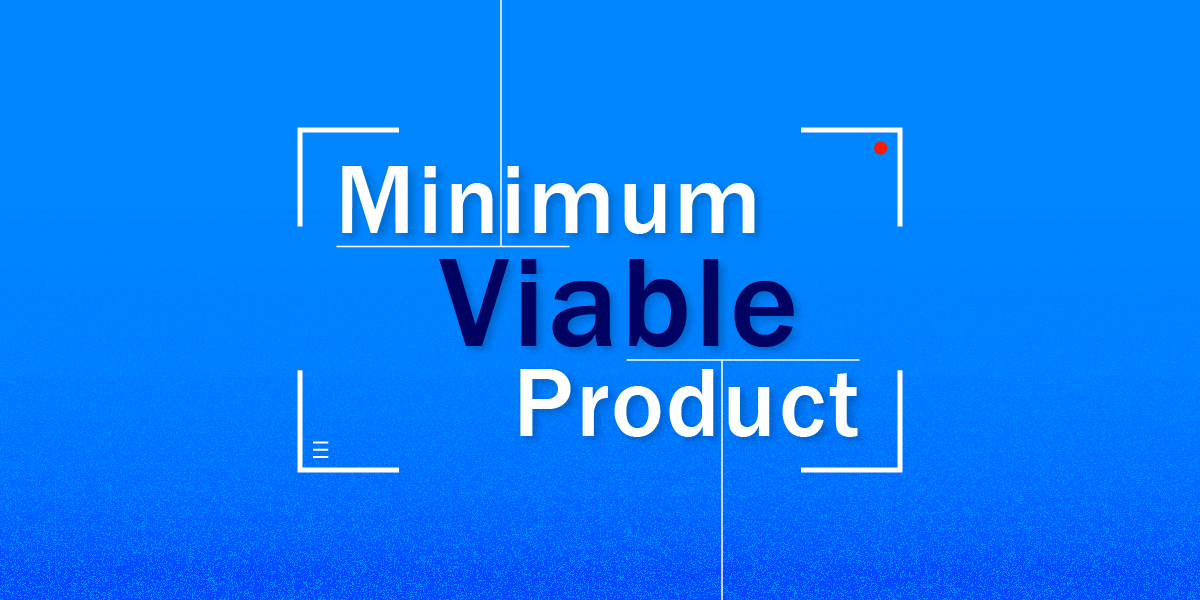The world is going digital. Digital is the talk of the town. Disruptive technologies are transforming the digital landscape and changing the way we live.
But in this fast-paced environment, one thing has certainly not changed. It has evolved, discovered new frontiers, but it truly has not changed. We are talking about how to build a successful product.
Necessity is the mother of invention and the key here is to identify a pain point and come up with solutions that solve the problem.
But any problem can be tackled in a number of ways, and every idea is unique. Transforming a breakthrough idea into a million users’ reality is not about visualizing a perfect product.
Besides being unique the idea needs to be viable, so what’s the science behind building a successful product?
There’s one science, building something that customers truly want.
The idea behind product development rests on the premise of validated learning. Making a full-fledged product without knowing if their truly is a need is not the right practice. An MVP is a perfect approach to test the waters and build something that is scalable.
So if you are a startup geek finding ways to jump on the digital wagon or someone who has just encountered their eureka moment, we will break down why you need to build an MVP. Although there is a new concept in the software development industry by the name of Exceptional Viable Product, the focus of development agencies is still heavily on the former. Let’s get a hang of MVP in detail.
So, What really is an MVP?
An MVP is the first version of a product with a basic set of features. It determines whether or not the product has the potential to succeed. The core idea behind an MVP is to strike the right balance between minimum and viable. It saves time and money and helps garner valuable user feedback.
The concept of MVP gained popularity after Eric Ries described it in his book ‘The Lean Startup’.
Let me break it down for you.
Let’s imagine, in your locality, there is no bakery that caters to weddings. You are a baker who sees the potential and are eager to start your new venture.
You also get an order for a wedding cake. How do you proceed?
It is your customer’s big day after all and in no way, you want to spoil it. With big fat weddings doing the rounds, customers tend to get particularly specific regarding the details. You need to ensure your customer is happy and gets the wedding cake that they have dreamt of.
If you go step by step in making a three or four-tier cake you will first gather the ingredients, then make a base, choose a filling and finally top it off with some icing. The entire process is not only tedious but more often than not, customers are not satisfied with the very first cake. They tend to ask for certain customizations.
So what now, will you throw away the entire cake and start from scratch?
Here’s how the concept of a Minimum Viable Product comes into the picture:
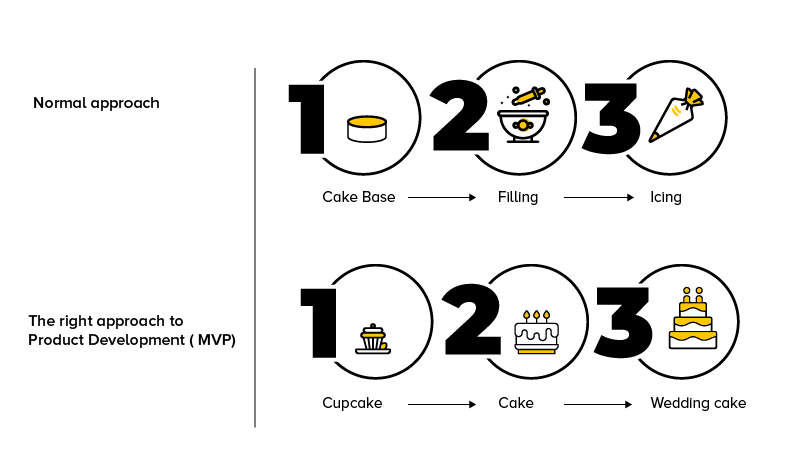
To ensure you deliver the perfect wedding cake, Begin with a Cupcake. Start by baking a cupcake for your customer, ask them what frosting they like, add on various sprinkles to see which looks more aesthetic and choose a cake mix that they want.
Here, the cupcake is your MVP. Not only it saves time and effort in the end product development, it generates valuable feedback for your product ie. The wedding cake.
After finding your customer the perfect cupcake you can move on to a regular size cake and then to a Wedding Cake.
Before rolling out the whole app, big companies rapidly launch an MVP in the market to get an idea regarding how their features will be accepted by the users. In fact, Dropbox, Facebook, Airbnb commenced as an MVP.
What’s the first step when building an MVP?
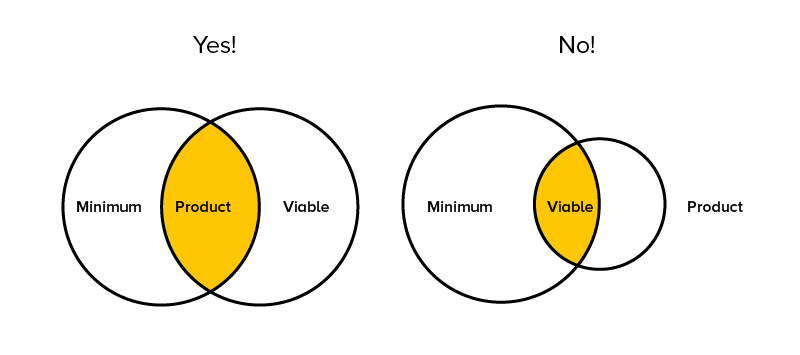
Any app works on a pain point. Your idea is plausible only if it is solving a problem. So the first step is getting your idea validated to make sure there is a problem to begin with. Start by identifying pain points and convert them into opportunity statements.
To build cutting-edge apps you must focus on solving a specific user problem. Empathize with your target audience and understand what your user group wants. There will be a number of user groups with different needs and wants, and what works for one will not necessarily work for another. So, you need to identify your niche audience.
The next step is conducting a research. When you interact with your primary user group and identify the problems they are facing, it will be easy to counter them and arrive at a solution.
Before building any product, forming a hypothesis to arrive at a solution is a must.
IDENTIFY( right problem) + TARGET ( Specific user Group) + ANALYZE( based on user interactions) = SOLUTION
Why is building a Minimum Viable Product important?
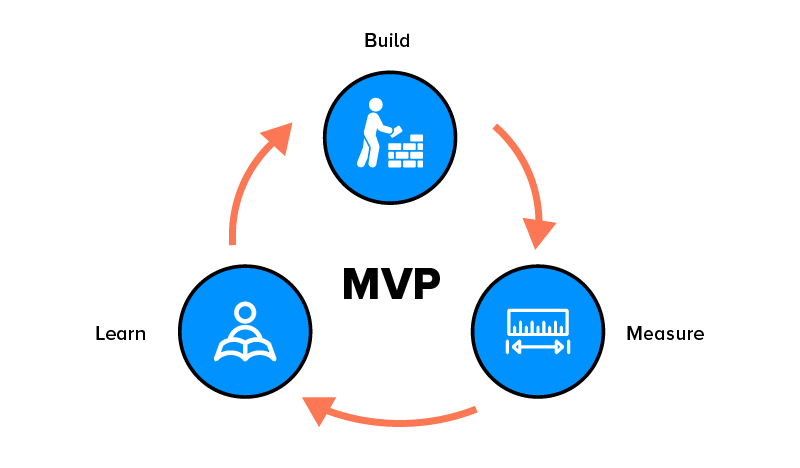
The MVP approach is not just limited to mobile apps. It can be used to develop websites or any product for that matter. Making an MVP is essential because it provides a number of benefits-
1. Gauging the response from potential users:
The idea behind an MVP is to garner customer feedback. With an MVP, we can establish that a customer can see the vision of the product and provide valuable insights in order to improve it.
2. Avoiding failures:
An MVP not only saves time but it also helps in avoiding huge capital losses.
3. Helps in attracting investors:
In most cases, MVP is the tool that investors base their funding decisions on and you can raise money for your mobile app by building an MVP.
4. Launching rapidly in the market:
The ‘build, measure and learn’ approach helps in rapidly launching an MVP and entering the market in the shortest time possible.
How to build a Minimum Viable Product?
By now, you must be acquainted with the concept of an MVP but many people tend to misunderstand the idea and commit some common mistakes.
Here we have listed the steps that are essential in the development of a Minimum viable product which encompasses the necessary Do’s and Don’ts.
1. Find the right balance
More often than not, companies either make a product that is really complicated with a lot of features or tend to miss out on its key functionality. The key is to find the right balance between design and value. With a minimal design, the product must offer maximum value.
Also, Minimum functionality does not imply that you ignore the product’s USP. The focus should be on maintaining minimum functionality but ensuring that it rightly captures the essence of the product.
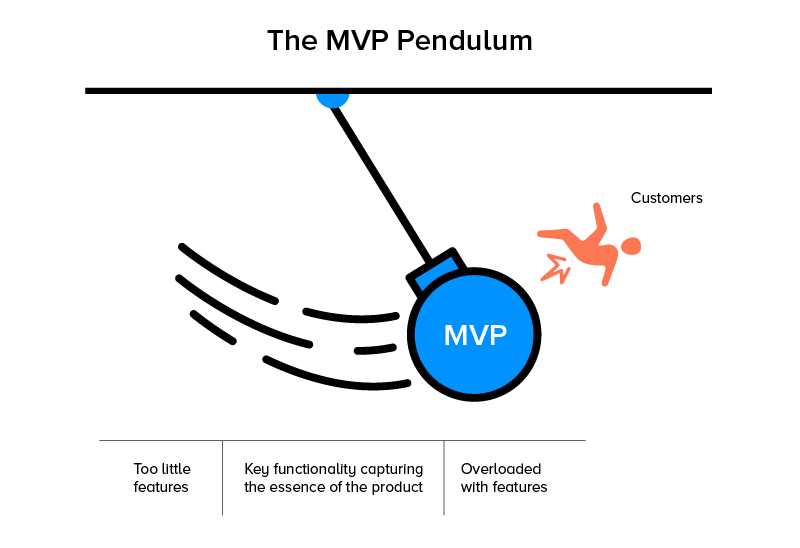
2. Characterize the Value proposition
The value proposition of a product does not just define your brand but it also captures your goals and visions. It must be decided on factors like what your niche audience wants, what value do you deliver and how it stands out from your competitors( USP). Having a definite value proposition is crucial for any successful product.
3. Never chase a perfect product
You need to understand that MVP is the first step and it need not be perfect. The idea behind an MVP is to garner user feedback.
In their quest to build a perfect product, most companies include a series of features that tends to shift the focus from its key functionality. It also leads to a delayed market entry. Also, an overloaded MVP consumes too much time and effort and is bound to fail.
This brings us to how companies like Facebook and Instagram became a pioneer because they started from a solid MVP and gradually transitioned into what it is today.
Facebook initially began as a social network for only Harvard students. Its very first version only had basic features like a profile page, send request and send a message. Facebook in 2019 comes with an array of amazing features like news feed, reactions, stories, live video streaming, and whatnot.
Instead of creating something big, your focus should be on creating something viable that is truly needed and scaling it to new heights by taking user feedback into consideration.
4. Focus on the goal
The central idea behind a Minimum Viable Product is gathering user feedback. It is not about generating revenue at the very first step, it is about determining whether your product sparks the interest of early adopters and are customers willing to pay for it.
5. Test with your target audience
To test in the real world, your product only needs the most essential features. Testing in real time helps in exploring user’s reaction and identifying the scope for improvement.
The example of Instagram validates why feedback is the principle goal behind MVP. Before releasing the app, Instagram had a lot of filters. Upon receiving feedback from their friends, the effects were reduced to 11. This was an underlying reason for Instagram’s success because reducing the filters made the app easy to use. Although Instagram has been around since 2010, no private messaging was available on the app until late 2013.
6. Upgrade and Improve
After observing how the user engages with your product, collect the findings and arrive at a conclusion regarding which elements to remove and which to improve. You must improve specific features that the user engages most with. Ensure your product has an easy to navigate UI and delivers a delightful experience.
Always remember, Iterating, improving, upgrading is an ongoing process.
Now that you are determined to build an MVP, here are the types of MVP you can choose from based on your requirements.
A. Piecemeal MVP
The concept of a Piecemeal MVP is to build it piece by piece by using existing tools and solutions. It is a smart approach to arrive at the functionality for a basic first version by combining components from various sources.
Groupon is a famous example of Piecemeal MVP. It began as a WordPress blog. The daily deals were featured as blog posts. After people bought the deals, Groupon used FileMaker to generate PDF versions of coupons and sent them to customers. It was only after the founder found the right market fit, that they scaled their business with a proper system in place.
B. Concierge MVP
With a concierge MVP, you have to deliver the services manually to your potential customers. It does not involve a lot of development effort, you can validate assumptions in real-time and find out if early adopters can see the vision behind your product. Concierge MVP is ideal when you are not really sure of the solution.
C. Wizard of Oz MVP
A Wizard of Oz is similar to a Piecemeal MVP except the potential users don’t really know the product is ready. It is demonstrated as a full-fledged product. In fact, the user experience is pretty genuine but the work is accomplished using the Piecemeal approach or delivering an experience the concierge way.
For instance, Amazon commenced by selling books. The idea was to buy straight from the distributor and ship it without having any book stocks in place. Initially, they focussed on books because it was easy to buy and relatively easy to ship.
Any successful Startup needs an MVP to test the waters. Startups usually get one chance, and building a Minimum Viable Product is their only chance to do it right.
The goal is to offer maximum value with minimum functionality and garner maximum validation in minimum efforts. Striking the right balance between minimum and viable is the key and an MVP should capture the very essence of the product.
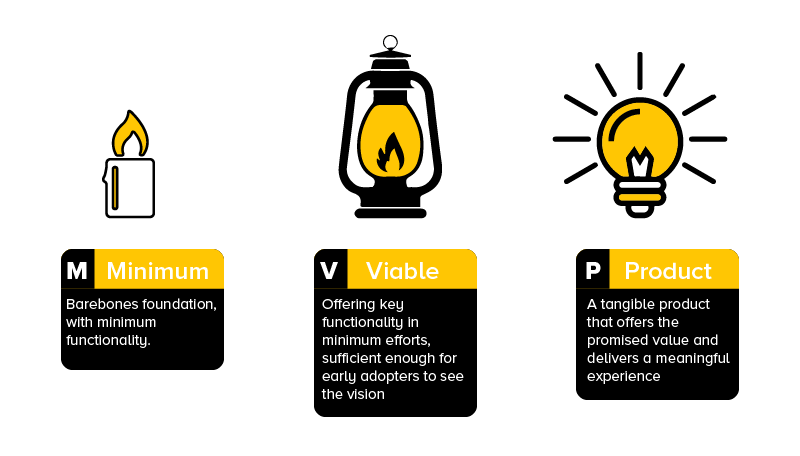

strategies your digital product..
